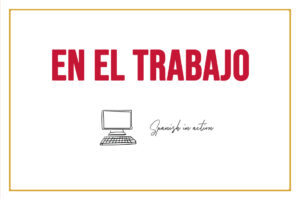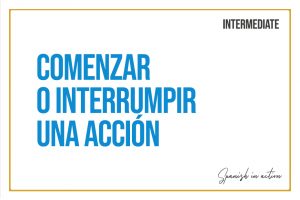If there is a frustration that I know, it is this: I read and I understand, but I listen and I don’t. I know it because I am also a learner of other languages, and because I have spent many years giving Spanish lessons as a second language. Is a constant frustration of the students, and even of those who come to learn Spanish.
Let’s try to understand why. Before in this same blog we have published articles reasoning about that, but here we want to make a clearer picture, specifically about the complexity of the dialects and varieties that coexist in the same language and that are spoken by different communities, also of the same language, and this is definitely what makes your understanding even more complex your oral comprehension.
I clarify: oral comprehension because, although written comprehension (reading) and oral comprehension (listening) are two skills for receiving messages and not producing them; they are very, very different.
Let’s define Spanish language like this:
Tongue – Fully defined linguistic system, with a high degree of leveling, and which is a vehicle of communication of a differentiated culture (Dictionary of the Spanish Language).
But it turns out that, for example, the inhabitants of the Canary Islands get on the same guagua (bus) as the Chileans, while the Spanish speakers on the Iberian Peninsula do it on the autobús (bus) as a Venezuelan. We speak Spanish, but with different dialects.
Dialect – Variety of a certain language that is clearly distinguished from those used in other geographical areas and that does not reach the category of language (Dictionary of the Spanish Language).
But it also turns out that, for example, my dear mother-in-law, an 88-year-old Venezuelan, a lover of reading and therefore an admirable well-educated speaker of Spanish, definitely uses a very different variety from mine, because the language can also present in its concrete manifestations, what we call speech, different varieties due to different causes that occur in the communication process. Here is a list to give you an idea:
We have diachronic varieties: which is the language that changes over the years.
In addition, there are geographical or diatopic varieties: which are produced due to the distinctions of the geographical zones: the Spanish of Mexico D.F. It is not exactly the same as that of Chihuahua, or that of Caracas as that of Maracaibo, my city.
The social or diastratic varieties (sociolects): are those that derive from a desire for perfect use of the language (cult), from a more elementary use (colloquial), from the low culture of the speaker (vulgar), from belonging to a profession or a specific social group (slang). They also have to do with sex, age, educational level, profession…
Finally, the diaphasic varieties (styles or registers): which are more personal to the individual and are due to the issuer’s situation, the theme, the channel, the interlocutors. Because we do not use the same words, not even the pronunciation depending on whether we are with friends, teachers, parents…, or in church, at the university…
So how is it possible to teach a Spanish that includes all the existing diversity, both dialects and varieties?
The variety regularly taught in Spanish classes is what we call the pan-Hispanic norm, which is an umbrella variety, supra-territorial, really somewhat false in terms of colloquialism. It is the variety that public speakers use when they are speaking for different and distant audiences. It is the only way for that audience to feel part of that form of speech and not excluded. The variety used in film dubbing or by voice actors. The one of the global channel announcers.
It turns out that this pan-Hispanic norm is very close to writing, because writing does not change as quickly or tend to be as local as orality. That is why we second language speakers find written comprehension much easier than oral comprehension.
What can we do? Should we surrender for this dramatic battle of oral communication?
Not! There are ways to break the barrier a bit and get closer. And that’s the first thing: get closer. The tendency towards incomprehension is: move the body away from the source we are listening to, block the ears and say: I can’t understand. It is the first thing that we must change by: -bringing the body closer, opening -imaginatively- the ears, and saying: I want to understand.
What can schools do to contribute to this approach to the reality of speech? This is what we do at @spanishperfecto :
-Use a program in which various varieties are exhibited, especially in their audios and videos.
-Having professors of different nationalities interspersed during the courses.
-Give lexical and linguistic information in general about the different varieties.
-Generate oral exchange activities between native and non-native speakers.
-Show respect to all dialects and varieties.
We may have preferences for one dialect or another, either because of the sonority or its functional nature. At our Spanish school in Houston, many students want to learn more about Mexican idioms because they have commercial relations with that country. Others prefer to have it with Spain as they aspire to spend a season there. Then we offer more useful resources to you.
What must prevail in our teaching is Spanish is one, although different ways of speaking coexist in it. This linguistic culture welcomes us all without discrimination. Once our student enters this community, he will never want to leave because Spanish is as rich as the richness of its varieties. If you, as a student, have understood this, you will understand all of us.



